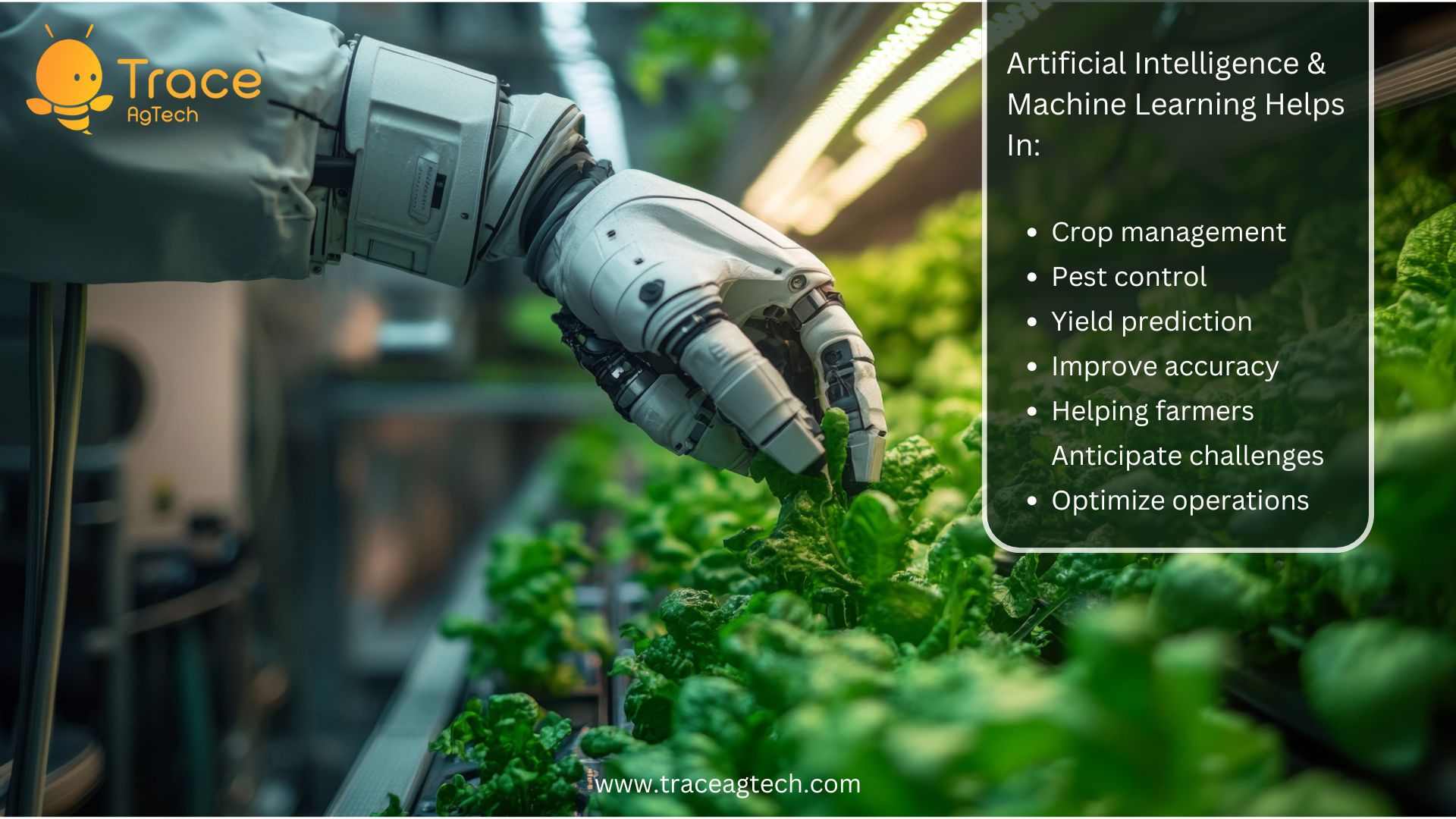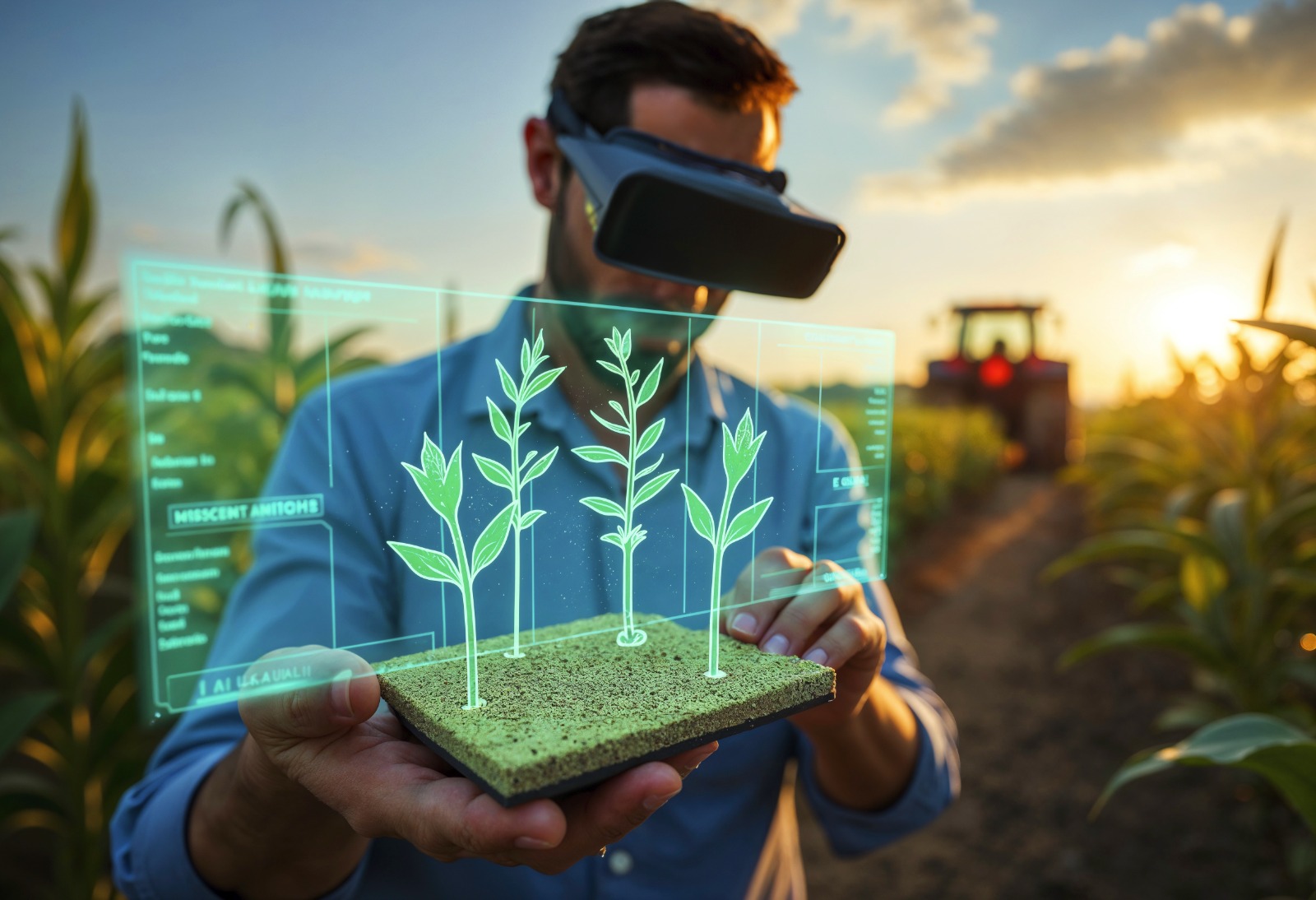The Rise of Smart Farming: How Technology is Revolutionizing Agriculture
Agriculture has been the cornerstone of human civilization for thousands of years, evolving through various stages from traditional practices to industrialized farming. Today, we are witnessing another transformative phase known as smart farming, where advanced technologies are revolutionizing agricultural practices. This shift is not just enhancing productivity but also making farming more sustainable, efficient, and data-driven.
What is Smart Farming?
Smart farming, also referred to as precision agriculture, involves the integration of cutting-edge technologies such as the Internet of Things (IoT), artificial intelligence (AI), robotics, drones, and big data analytics into traditional farming practices. The primary goal is to optimize resource usage, increase crop yields, reduce environmental impact, and improve overall farm management. This technological approach allows farmers to monitor and manage their operations with a level of precision that was previously unimaginable, creating smarter, data-driven decisions that improve both profitability and sustainability.
Key Technologies Driving Smart Farming
- Internet of Things (IoT): IoT devices, including sensors and connected equipment, collect real-time data on soil conditions, weather, crop health, and machinery performance. This data allows farmers to make informed decisions, automate irrigation systems, and monitor livestock remotely. For example, soil moisture sensors can trigger irrigation systems to activate only when necessary, reducing water waste and improving crop hydration. Additionally, smart collars on livestock track animal movement, health, and reproductive cycles, providing farmers with critical insights to enhance animal welfare and productivity.
- Artificial Intelligence and Machine Learning: AI algorithms analyze vast amounts of agricultural data to provide insights on crop management, pest control, and yield prediction. Machine learning models continuously improve their accuracy, helping farmers anticipate challenges and optimize operations. For instance, AI can analyze satellite images to detect early signs of plant diseases, allowing for prompt intervention. Moreover, predictive models can suggest optimal planting times, forecast weather conditions, and recommend specific crop varieties based on historical data and current environmental factors.

- Drones and Aerial Imaging: Drones equipped with high-resolution cameras and multispectral sensors provide detailed aerial imagery. Farmers can detect crop stress, monitor field conditions, and even apply fertilizers or pesticides precisely where needed. This aerial perspective helps identify issues like nutrient deficiencies, water stress, or pest infestations much earlier than ground inspections. Drones can also be used for planting seeds in challenging terrains, saving time and labor while ensuring even distribution.
- Precision Machinery: Autonomous tractors, seed planters, and harvesters equipped with GPS and AI technology perform tasks with remarkable accuracy. This reduces labor costs, minimizes waste, and ensures consistent quality. Precision machinery can adjust planting depth and spacing automatically based on soil conditions, leading to uniform crop emergence. Additionally, smart sprayers apply fertilizers and pesticides only where needed, reducing chemical usage and mitigating environmental impact while cutting costs.
- Big Data Analytics: The vast amount of data generated from IoT devices, weather stations, and farm equipment is analyzed to uncover patterns and trends. This helps in making strategic decisions related to crop rotation, planting schedules, and resource allocation. For example, analyzing historical yield data alongside weather patterns enables farmers to select the most suitable crops for upcoming seasons. Big data also supports supply chain optimization by predicting market demands, reducing post-harvest losses, and improving logistics.
Benefits of Smart Farming
- Increased Productivity: By leveraging technology, farmers can optimize planting, irrigation, and harvesting processes, leading to higher yields and better quality crops. Precision tools help ensure that every plant receives the right amount of nutrients, water, and care, maximizing growth potential and reducing crop failures.
- Resource Efficiency: Smart farming minimizes the use of water, fertilizers, and pesticides through precise application, reducing costs and environmental impact. This targeted approach not only conserves resources but also decreases runoff, preserving soil health and local water bodies.
- Sustainability: Data-driven insights promote sustainable practices, such as soil health monitoring, crop diversification, and reduced chemical usage, contributing to long-term agricultural viability. Sustainable farming techniques, supported by smart technologies, help combat climate change by lowering greenhouse gas emissions and enhancing carbon sequestration in soils.
- Risk Management: Predictive analytics help farmers anticipate weather changes, pest outbreaks, and market fluctuations, enabling proactive decision-making. Early warnings of adverse conditions or potential threats allow for timely interventions, reducing crop losses and financial risks.
- Labor Efficiency: Automation reduces the dependency on manual labor, addressing labor shortages and enhancing operational efficiency. Smart machinery can perform repetitive, time-consuming tasks with precision, freeing up human labor for more complex activities that require decision-making and oversight.
Challenges in Adopting Farming Technologies
While the benefits are significant, there are challenges to the widespread adoption of smart farming technologies:
- High Initial Costs: The investment in advanced equipment and technology can be prohibitive, especially for small-scale farmers. Costs related to purchasing, installing, and maintaining smart devices can deter adoption without financial support or government incentives.
- Lack of Technical Knowledge: Farmers need training to effectively use and maintain smart farming tools. Without proper education and support, there is a risk of underutilizing or mismanaging these technologies, reducing their potential benefits.
- Connectivity Issues: In rural areas, limited internet connectivity can hinder the implementation of IoT and data-driven solutions. Reliable network infrastructure is critical for real-time data transmission, which is essential for timely decision-making.
- Data Security: The reliance on digital systems raises concerns about data privacy and cybersecurity. Protecting sensitive farm data from breaches and unauthorized access is vital to maintain trust in smart farming solutions.
The Future of Smart Farming
The future of agriculture lies in the continued integration of smart technologies. Innovations such as blockchain for supply chain transparency, robotics for automated fieldwork, and advanced AI for real-time decision-making will further transform the industry. Blockchain can improve traceability, ensuring food safety and quality from farm to table. Robotics will expand beyond simple automation, performing complex tasks like selective harvesting with precision. Additionally, advanced AI will facilitate real-time monitoring of entire farms, offering dynamic recommendations based on continuously updated data.
As technology becomes more affordable and accessible, even smallholder farmers will be able to benefit from smart farming solutions. Partnerships between governments, tech companies, and agricultural organizations will play a crucial role in driving this transformation and ensuring equitable access.
Conclusion
Smart farming is more than just a technological trend; it is a necessary evolution to meet the growing global demand for food while addressing environmental and economic challenges. By embracing technology, farmers can achieve higher productivity, sustainability, and resilience, paving the way for a more secure and efficient agricultural future. As we move forward, the fusion of traditional farming wisdom with modern technological advancements will shape a new era of agriculture, one that is not only smarter but also more sustainable and inclusive.


Any comments?